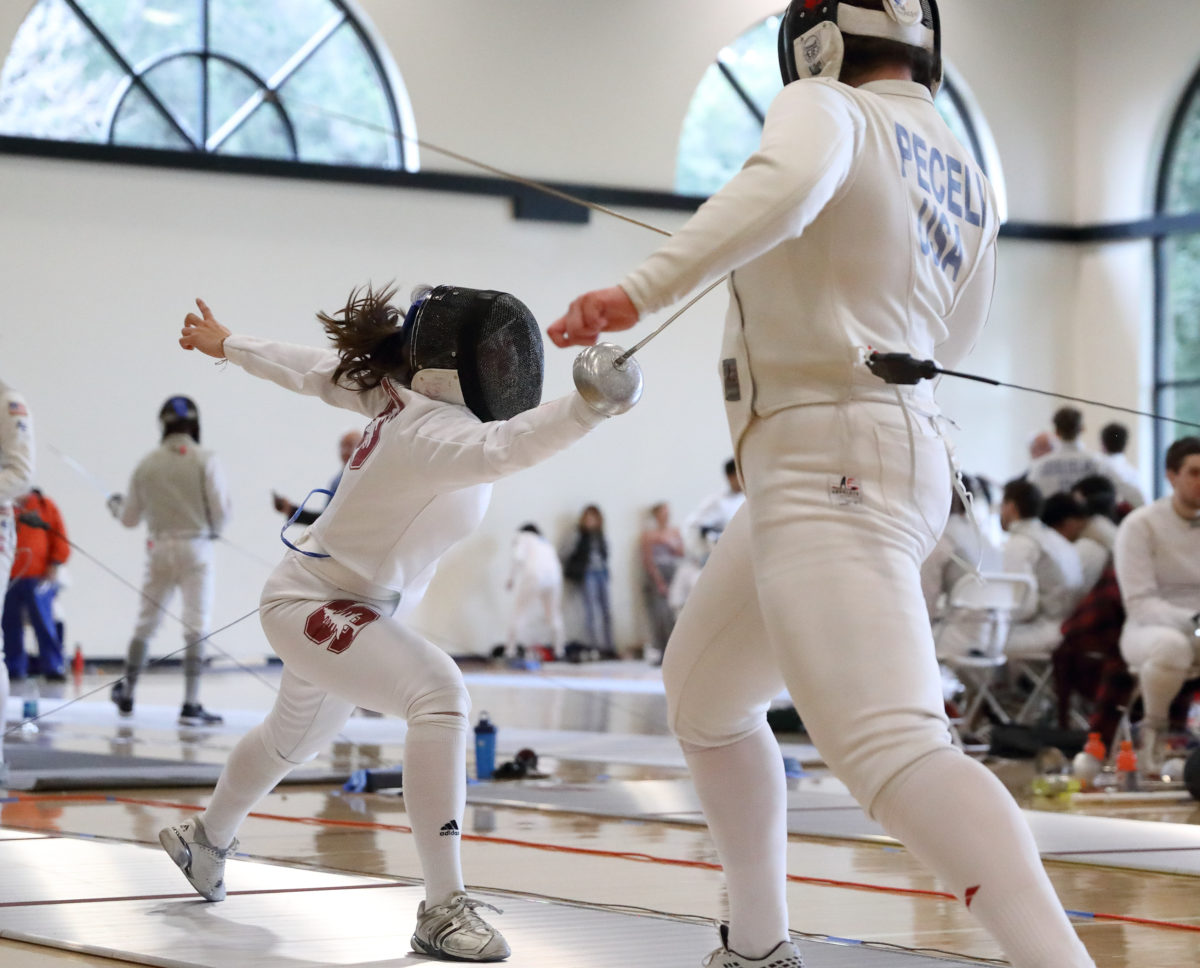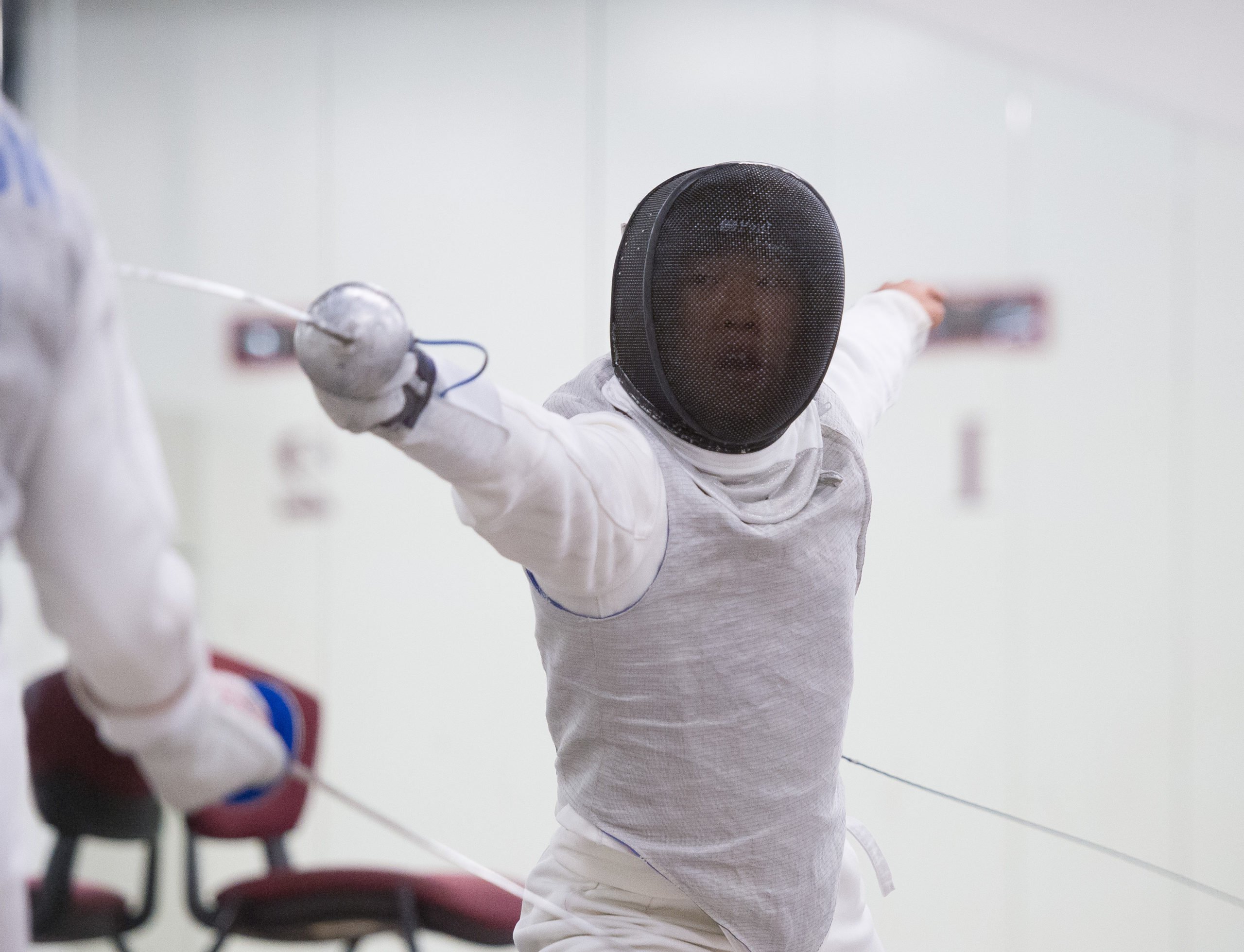“Caught off garde” is an ongoing series on the termination of men’s and women’s fencing at Stanford. The teams first heard they would be two of 11 discontinued sports when they woke up on Wednesday to a Zoom webinar with Athletic Director Bernard Muir.
Before joining the call with Muir, the fencing team had an idea of the webinar’s content. Their captain had forwarded the team a message from their co-head coach Lisa Posthumus, who was alerted of the decision by Muir a little while prior.
Rising junior Jainil Sutaria and his teammates first found out that their sport would be dropped through their captain’s message.
“No longer having it or having it no longer be recognized by the school is extremely rough,” Sutaria said. “We have 7 a.m. practices every morning. That’s something that no one in their right mind would look forward to — a 7 a.m. wake-up call — but honestly it was super enjoyable.”
Muir’s first year as athletic director at Stanford came in 2012. For seven years, the department had only expanded, most recently adding a beach volleyball team in 2013. That changed, however, on Wednesday when Muir oversaw the department’s first major reduction.
A letter to the campus signed by Muir, President Marc Tessier-Lavigne and Provost Persis Drell made the case that the pandemic exacerbated a structural deficit in the athletic department, meaning that 11 programs would need to be cut in the name of fiscal responsibility. The university added that any existing scholarships and coaches’ salaries would be honored.
With the chat function turned off, Muir ended his meeting with the affected athletes abruptly after delivering the news with no time immediate time for questions until subsequent team-specific meetings later in the day.
“We’re all feeling a mix of anger, devastation, shock and disappointment,” said rising senior foil Madeline Liao. “One thing’s for sure though — there is not a sense of defeat.”
Athletes have the opportunity to compete for one last time during the 2020-21 season. Competition itself was the topic of a perspective Liao wrote in May for the athletic department when the national competition was canceled due to COVID-19. That same determination is evident both in Liao’s outlook for the upcoming season and the fight for the future of the program.
The fencing program faced a similar threat to its survival in 2008, but the coach was given advance notice and was able to fundraise before a public and final decision was made — which ultimately saved the program. In 2008, Jimi Jung ’04 donated $1.25 million to the fencing program to cover operating costs while the team attempted to create a permanent endowment worth between $5 million to $8 million.
“One of the main things that really annoyed us is the main reason they decided [to cut 11 sports] was because of financial reasons, but the thing with Stanford fencing is it’s almost fully self-funded,” Sutaria said.
According to data from the U.S. Department of Education, the operating game-day expense per athlete for the women’s program is $2,191 and $2,022 for the men’s program. For the 2020 season, there were 15 athletes on the women’s roster and 14 on the men’s.

In high school, Liao would arrive two hours early to train alone before a two hour practice, then finish with another hour of stretching at home. On weekends, she would travel up to four hours from her home in Fresno to practice in San Francisco.
“Needless to say, it got a bit lonely,” she said. “I felt alone in my pursuit and passion for fencing.”
Being on a team that trains and competes together at Stanford, however, changed things.
“Fencing at Stanford has taught me that the sport is so much more than individual success,” Liao said. “The greatest joy I had this year was not in my individual achievements, but in bringing the team closer together as a whole.”
For students like Liao, their athletic endeavors are also educational. Stanford’s strength is its ability to support its student’s interests, which is why chipping away at that athletic experience was such a profound sorrow to affected athletes.
Now without a guaranteed future for, what some may call niche, sports on the varsity level, the University may struggle in the future to attract students with such interests. The high school student-athletes may instead chose another university with greater athletic possibilities.
“If I wasn’t able to fence, I honestly probably would not have ended up at Stanford,” Liao said. “I had offers from other schools and probably would have chosen one of them.”
“[Fencing] was actually a decision that helped me make the decision that I want to go to Stanford,” Sutaria said. “I was originally going to pick between Stanford or MIT, and MIT’s team isn’t Division I.”
Now, however, MIT’s Division III program stands above the club level — which Muir has offered teams the ability to transition to if there is student support.
“We’ve discussed the matter briefly,” Liao said, “but it’s not something we really want to talk about right now — we’re more focused on what we can do with the upcoming season.”
“We definitely opened conversations to being a club team, but it’s honestly definitely not the same not being recognized by the school and not actively being sponsored,” Sutaria said. “There’s such few club fencing teams in the area and actually being able to compete with other club fencing teams would be difficult.”
Among the many losses, the most pervasive is the sense of community. Liao’s biggest worry is that the class of 2025 had their hard work negated by circumstances out of their control. Sutaria reminisced on board game nights, p-sets on planes and trips to the Farm Stand that made the team a family.
But on a random Wednesday in the middle of a pandemic, Stanford stripped it all away.
If the health situation permits, there will only be one more season of 7 a.m. practices for the fencing team.
This article has been updated to reflect that the fencing co-head coach’s full name is Lisa Posthumus, not Milgram. The Daily regrets this error.
Contact Daniel Martinez-Krams at danielmk ‘at’ stanford.edu.
